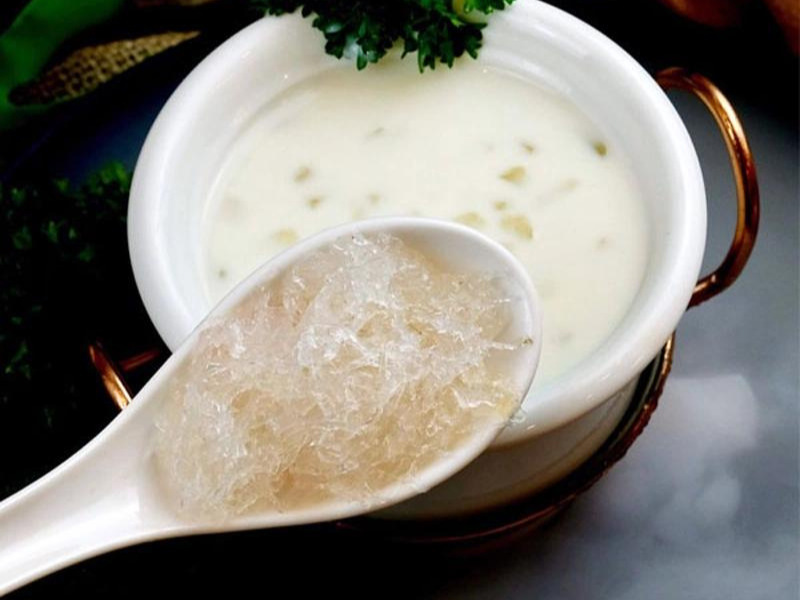News, PRODUCT CONSULTATION
How to prepare raw bird’s nest to maintain nutrition at home
### How to Prepare Raw Bird’s Nest to Maintain Nutrition at Home
Bird’s nest, often referred to as a “delicacy fit for royalty,” is prized for its high nutritional value. Consuming bird’s nest can provide numerous health benefits, such as enhancing skin health, boosting the immune system, and improving overall vitality. However, preparing raw bird’s nest properly is crucial to preserve its nutrients. In this guide, we’ll walk you through the detailed steps on how to prepare bird’s nest at home to ensure you maximize its nutritional value.
—
## Section 1: Understanding Bird’s Nest
Before diving into the preparation, it’s essential to understand what bird’s nest is and why it is so highly valued.
### What is Bird’s Nest?
Bird’s nest is made from the saliva of swiftlets, which hardens upon exposure to air. These nests are typically found in Southeast Asian countries like Indonesia, Malaysia, Thailand, and Vietnam. The nests are collected from caves and cliffs, cleaned, and processed before being sold in various forms, such as raw, dried, or in bottled drinks.
### Nutritional Benefits of Bird’s Nest
Bird’s nest is rich in essential nutrients, including:
– **Amino acids**: Supports tissue repair and boosts the immune system.
– **Glycoproteins**: Enhances cell growth and regeneration.
– **Sialic acid**: Important for brain development and improving cognitive functions.
– **Minerals like calcium, potassium, and magnesium**: Promotes bone health and muscle function.
The nutrient profile of bird’s nest makes it beneficial for various health purposes, such as improving skin elasticity, enhancing respiratory health, and supporting recovery during illness.
—
## Section 2: Choosing and Storing Raw Bird’s Nest
### How to Choose Quality Bird’s Nest
When purchasing raw bird’s nest, here are some tips to ensure you get a high-quality product:
1. **Color and texture**: Look for bird’s nests that are white, slightly translucent, and free of impurities. Avoid nests that are too yellow or brown, as they may have been treated with chemicals.
2. **Shape and size**: A high-quality bird’s nest should have a consistent shape and thickness. Avoid nests that look too thin or have many broken pieces.
3. **Smell**: Raw bird’s nest should have a light, natural scent. If it smells too fishy or pungent, it may not be fresh.
### How to Store Bird’s Nest
– Store raw bird’s nest in a cool, dry place, preferably in an airtight container.
– For long-term storage, you can keep the bird’s nest in the refrigerator or freezer to prevent moisture and mold growth.
—
## Section 3: Preparing Bird’s Nest at Home
The preparation process is crucial to retain the bird’s nest’s nutrients. Below is a step-by-step guide to preparing raw bird’s nest.
### Step 1: Cleaning the Bird’s Nest
1. **Soaking**: Place the raw bird’s nest in a bowl and fill it with cold water. Let it soak for about **4-6 hours** or until the nest becomes soft and pliable. Soaking times may vary depending on the thickness and type of bird’s nest.
2. **Rinsing**: Once softened, gently separate the strands using your fingers. Change the water a few times to wash away any impurities.
3. **Removing impurities**: Use tweezers to remove any remaining feathers, dirt, or other impurities. Be patient during this step, as it is crucial to ensure a clean and high-quality final product.
> **Tip**: Do not soak the bird’s nest in hot water, as it can destroy the delicate nutrients.
### Step 2: Preparing for Cooking
– After cleaning, rinse the bird’s nest again in fresh water.
– Drain and let it sit in a fine-mesh strainer to remove excess water.
### Step 3: Cooking the Bird’s Nest
Now that your bird’s nest is clean, it’s time to cook it. Bird’s nest is often double-boiled to preserve its nutrients. Here’s a simple recipe:
**Ingredients**:
– 10-15 grams of cleaned bird’s nest (about 1-2 pieces)
– 2 cups of filtered water
– Rock sugar (to taste)
– Optional: red dates, goji berries, or pandan leaves for extra flavor
**Cooking Instructions**:
1. **Place the bird’s nest** in a double boiler and add 2 cups of filtered water.
2. **Cover the pot and simmer** on low heat for about **30-45 minutes**. The bird’s nest should have a gelatinous texture when ready. Avoid overcooking, as it can turn the nest into a mushy consistency and reduce its nutritional value.
3. **Add rock sugar** during the last 10 minutes of cooking. If you’re using other ingredients like red dates or goji berries, add them 10 minutes before finishing.
4. **Cool slightly** before serving. Bird’s nest can be enjoyed warm or cold.
> **Note**: Never cook bird’s nest over high heat, as it can break down the proteins and reduce its benefits.
—
## Section 4: Tips for Maximizing Nutritional Benefits
– **Use filtered water**: The quality of water used can affect the final taste and nutritional value of the bird’s nest. Always use filtered or bottled water for soaking and cooking.
– **Avoid metal utensils**: When handling bird’s nest, avoid using metal utensils as they can react with the proteins. Use ceramic or wooden utensils instead.
– **Do not store cooked bird’s nest for too long**: If you have leftovers, store them in the refrigerator for up to **3 days**. Reheat gently before consuming to preserve nutrients.
—
## Section 5: Frequently Asked Questions (FAQs)
### 1. Can I prepare bird’s nest in advance and store it?
Yes, you can prepare bird’s nest in advance, but it’s best to consume it within **3 days**. Store it in an airtight container in the refrigerator and reheat gently before serving.
### 2. How often should I consume bird’s nest for optimal health benefits?
For general wellness, consuming bird’s nest **2-3 times per week** is sufficient. Pregnant women, the elderly, or those recovering from illness can increase consumption to **3-4 times per week**.
### 3. Can children consume bird’s nest?
Yes, bird’s nest is safe for children above 1 year old. It can enhance their immune system and support growth. However, consult a doctor before introducing it to younger children.
—
## Conclusion
Preparing raw bird’s nest at home requires time and patience, but the result is a nutritious delicacy that offers numerous health benefits. By following the steps above, you can ensure that you’re getting the most out of your bird’s nest while preserving its nutrients. From selecting quality nests to the final cooking process, each step plays a vital role in delivering the best possible nutritional value.
Bird’s nest isn’t just a luxurious treat; it’s a health-enhancing food that can support your well-being in various ways. By integrating it into your diet regularly, you can enjoy its benefits for years to come.
—
I hope this guide helps you prepare bird’s nest at home while maintaining its nutrition. Enjoy the process and the health benefits it brings!

